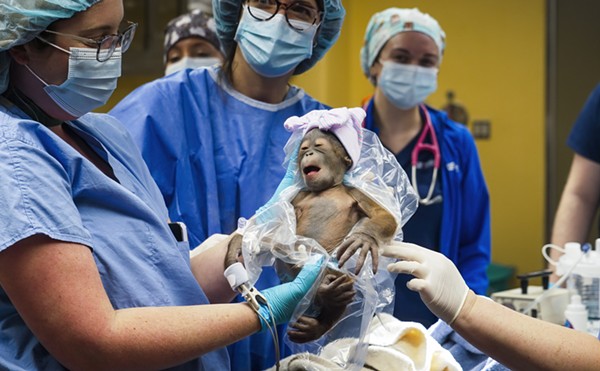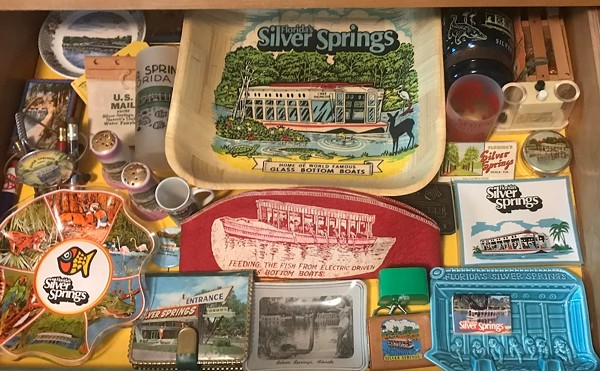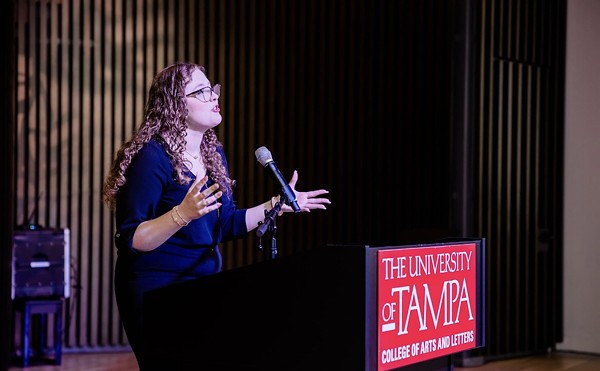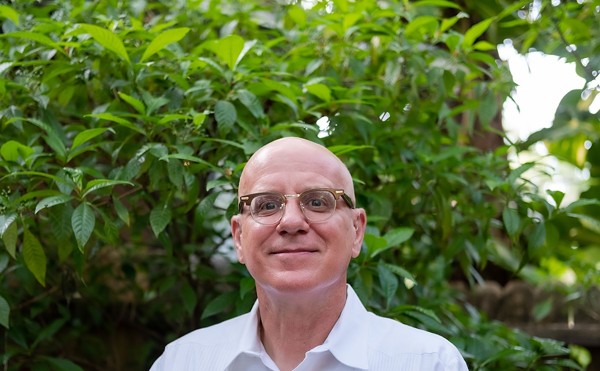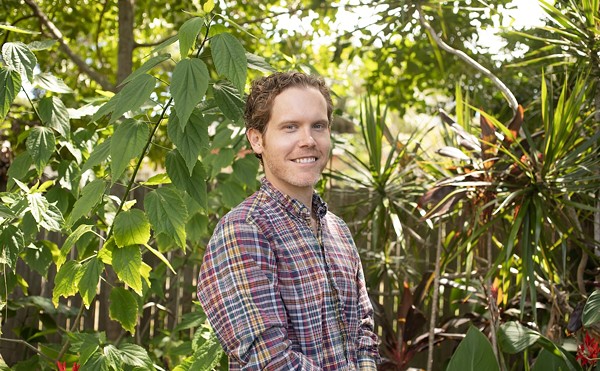It’s long been a rite of passage for teens to go away to summer camp, and athletic summer camps have always been part of that mix. But let’s be clear. There are your sports camps, and then there is the IMG Academy in Bradenton, the world-famous facility whose 2014 summer camps begin next week and continue through August 16.
“There’s no other place like it,” says Frank Ryder, a 16-year-old from Boulder, Colorado who was first introduced to the Academy through its seven-week summer basketball camp.
And the training’s not just physical, says Director of Baseball Dan Simonds.
“It’s your traditional camp in the sense that we’re going to work on skill sets and we’re going to develop the player, but he’s also going to develop mentally,” says Simonds.
Located along 34th Street West in Bradenton, the Academy doesn’t look all that distinctive from the outside. But once you say the magic words and enter its massive, sprawling 450-plus-acre campus, you realize that this is, as GQ described it not too long ago, a sort of Shangri-la of elite jock culture. It’s not long before you come upon a large bronze statue of Academy founder Nick Bollettieri, the revered tennis coach who had a hand in developing 10 tennis players who attained #1 world rankings — none more famous than star protégé Andre Agassi. The legendary coach created what was originally known as the Nick Bollettieri Tennis Academy in 1978. In 1987 the sports and entertainment company IMG purchased the Academy, and its growth has multiplied in the 27 years since.
Part of that evolution included the addition of an academic campus in 2001. The school runs from Pre-K through 12th grade with over 950 students enrolled (500 in grades 6-12). IMG has a radically low teacher-student ratio, and school officials boast that 98 percent of its graduates move on to college, and 60 percent commit to a Division 1 university. Athletes from all over the world attend (currently from over 80 nations), leading to the need for classes, both during the regular year and the summer camps, in English as a second language and studying for standard college admissions tests.
It’s not cheap. The cost of an academic year at IMG ranges from $48,000-$51,000, $62,500- $65,000 if one lives on campus. (financial aide is available.) Extensive year-round training is offered in eight different sports — tennis, golf, soccer, lacrosse, baseball, basketball, track and field/cross-country, and football.
As the summer beckons, all of these disciplines are taught in camps of one-, three- and five-week durations (and longer in the case of basketball). The costs for the camps range from $1,500 to around $10,000, depending on the length of the program and whether the camper stays in an IMG resident hall. Campers can also take classes in IMG’s Athletic and Personal Development program — “APD” for short — for an extra fee.
According to Director of Soccer Scott Dean, two factors distinguish IMG from other camps when it comes to a young athlete’s development. One is the quality of the staff (Simonds’ pedigree, for instance, goes back to the late ’80s, when he was a catcher with the Chicago Cubs and Baltimore Orioles.) And the other is APD.
“It’s essentially a total athlete package,” says Dean. “So whether a kid can take part in vision, take part in mental toughness, there are lots of aspects that are coming into play off the field that have a direct correlation to your performance on the field.”
Officials boast about the level of professional training the campers get. “What we’re helping them understand is that every athlete is different and every athlete has their own different needs,” says IMG’s David Hesse.
Hesse, a native of Glasgow, has three Master’s degrees in psychology, including one in sport and exercise psychology. He has led the APD program since 2010, and is a compelling advocate for its benefits.
He says every athlete regardless of his or her sport gets physical and mental conditioning. But with APD they get an extra hour a day for five days a week led by a specialist in mental conditioning, nutrition and leadership.
He says this kind of training helps future pro athletes develop “coachability.”
“Do they have an open mind set?” Hesse asks. “Are they willing to learn their mistakes? ‘Coachability’ is the number one criteria, no matter where they are in terms of athletic lifestyle.” He talks about attitude being a training skill, and teaching attendees the power of motivation.
The idea is to determine the athlete’s strengths and weaknesses, and begin working on those perceived weaknesses. For example, a basketball player might possess good ball handling skills, but at the same time lack explosive power after five yards out. The diagnosis would then to have him take a course in improving speed development.
Working as they do with young athletes who aspire to the pro’s, the staff at IMG is intensely aware of trends, some of them disturbing, on the professional level.
In basketball, for instance, some critics believe that there’s been something lost in both the college and pro game in the past decade, as more and more talented players do the “one and done,” attending a top-ranked university for a year as dictated by the NBA before jumping directly into the pro’s.
Kenny Natt says he sees that all the time now, and is glad he can do something about it at IMG. Natt is a former pro (drafted by the Indiana Pacers in 1980) who coached in the NBA for 14 years. Now the head of the basketball program at IMG, he says that it’s become more and more apparent to him that even the best athletes coming out of major programs in the U.S. “are not very skilled.”
“They’re living off their athleticism and their huge bodies and basic fundamentals that they received,” he says. But when it comes to basic ball handling, passing kills and shooting techniques? It’s a different game now, he says, and attributes that to the unrelenting pressure on head coaches in both college and the pros to win and win now.
Along with the various camps that the basketball program runs at IMG is something called the NBA pre-draft camp (there’s also a WNBA pre-draft camp), where college stars work on their game before the June draft. Natt says he’s simply “blown away” by how unprepared most of them are for the pro game.
When it comes to training young baseball players, particularly pitchers, IMG is sensitive to a disturbing phenomenon that’s been surfacing in Major League Baseball of young pitchers coming down with serious elbow injuries.
IMG’s Dave Simonds attributes this relatively recent development to the fact that young pitchers are playing baseball year-round now.
“Baseball has become a 12-month training camp, where years ago, kids were playing a lot of sports, so it’s very specialized.” He has spoken with his pitching coaches about making sure these young arms get time off. “We can still develop them. We can still do some things, but we need to make sure that we’re monitoring their throwing very carefully.”
IMG officials say this is also where the advent of the Wood Bat League helps. The WBL seeks to combat the risk of overuse injuries by maintaining a 50/50 balance between competition and practice.
IMG also offers adult programs in tennis, golf and performance, in which adults can go through training disciplines like mental conditioning, vision training or athletic body management.
But it’s the young athletes who are the heart of the operation. Frank Ryder, the young basketball player, convinced his parents to enlist him in the seven-week camp after he saw an online ad for the Academy. That experience was “awesome,” he says, and he’s now on the campus nearly 24/7, having opted to enroll at the academic school this year.
Ryder says the level of completion at IMG was at another level than what he was getting in Boulder. He acknowledges that it’s a major commitment, but camp activities like water slides, outdoor movies and even some school dances mean that he gets to enjoy some typical teenage downtime.
“You’ve got to work hard, and you’ve got to use every ounce of energy you have and put in a bunch of time to get the results,” he says. But it’s all worth it.
“You learn so much.”
For more information, go to imgacademy.org.






